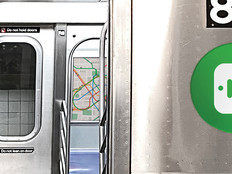“They really love to mimic that residential experience, so being able to bring the comforts of home to a hospital room provides a level of comfort and familiarity to the patient,” he says.
Customers expect to have a personalized content experience no matter where they travel, and it’s important for hospital systems to recognize this when upgrading displays in their patient rooms.
“Digitalizing the patient room experience is really key as we look toward the future,” Rose says.
The Benefits of Digital Signage for Clinicians
For clinicians and care providers, digital displays can help improve workflows, which Rose says is critical for maximizing clinician productivity.
“Nurses no longer have to manually update a dry erase whiteboard and can manage the patient’s care plan from the nurse’s station,” he says. “Additionally, the integration of electronic health record platforms provides real-time updates on the patient’s care plan, along with a personalized program to enhance their stay.”
The generous size of the displays — which reach up to nearly 100 inches — allows more content to be displayed in one centralized location, from wayfinding information to applications for patient check-in.
“Care plans can change, from medication needs to post-operative care. On a daily basis, that care plan can change,” Rose says. “Being able to dynamically update plans with a digital display in real time is critical for both the patient and the care providers.”
Click the banner to discover how health IT solutions can help create an integrated care experience.
Interoperability Is Key for Successful Digital Display Implementations
Rose notes that digital displays can work with other Samsung digital devices, including tablets.
“Tablets are great tools inside and outside of the patient room, because you can use them for bedside applications,” he explains. “We also use tablets for digital door signs and other scenarios that might help clinicians in the hospital from a mobility standpoint, because they’re able to take these devices with them and really enhance their workflow efficiencies.”
Another feature of Samsung digital displays is content mirroring, where patients or care providers can share the content on their mobile devices to the digital display through Samsung Smart View technology.
“If the phone or tablet is a little bit too small, and you’re in the patient room and you’ve got a big, beautiful Samsung TV at the end of your bed, you can take the content that’s on your mobile device, mirror it to the TV in the room and have a much better viewing experience,” Rose says.
He points out that the average hospital stay is about four days and says that the deployment of interactive digital displays can help care facilities increase experience scores and retain more patients.
From Rose’s perspective, the use of digital displays would significantly increase a hospital’s Hospital Consumer Assessment of Healthcare Providers and Systems score.
“Digital displays play a critical role in patient satisfaction when they’re filling out HCAHPS surveys,” he says.
Samsung works with a healthcare facility’s IT leaders, procurement specialists and clinical team to assess what displays and tablets are needed to improve the patient experience, then outlines the required infrastructure, which could include IP networks and remote device management capabilities.
“It’s our job to make sure that we’re involved with as many of the key stakeholders as we can be,” Rose says. “We engage with all levels of the healthcare network, from top to bottom and bottom to top.”
He adds that Samsung’s design philosophy stresses simplicity of interoperability.
“When you’re within that ecosystem with tablets, phones, TVs and digital signage, the interoperability is much easier when you’re using one ecosystem,” he says. “The simplicity of making everything work is really paramount, particularly in a healthcare setting.”
Brought to you by:













